Introduction
The Vibrant World of Drag Culture
In the vibrant world of drag, where self-expression reigns supreme, Drag makeup is more than just a tool—it’s a transformative medium. It’s a way for drag queens to create their larger-than-life personas, to tell their stories, and to challenge societal norms.
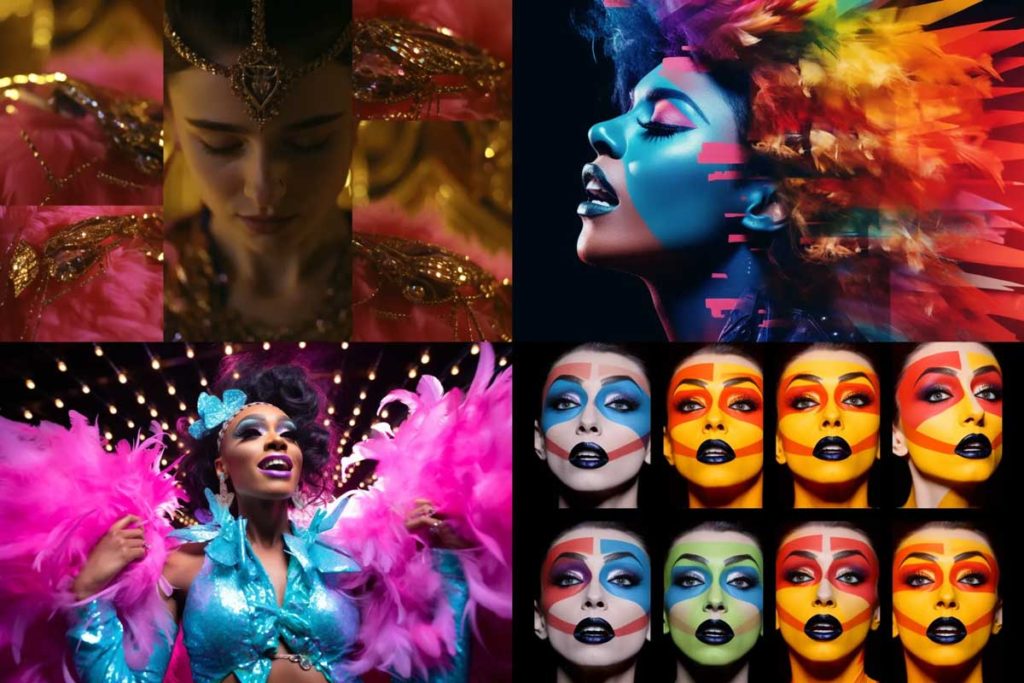
Drag culture, a dazzling spectacle of color, creativity, and courage, has been a part of our society for centuries. From the grand stages of Shakespearean theatre to the underground clubs of the 20th century, and now, in the spotlight of mainstream media, drag has always pushed boundaries and questioned conventions.
The Power of Drag Makeup
At the core of this vibrant culture is the transformative power of drag makeup. It’s more than just achieving a fabulous look (though that’s undeniably a big part!). It’s about metamorphosis, about the ability to morph into an extraordinary persona. The art involves contouring to feminize a masculine face, using highlighting techniques to emphasize features, and applying foundation to craft a flawless canvas.
Drag makeup is a form of artistry that requires skill, creativity, and a deep understanding of aesthetics. It’s a testament to the transformative power of makeup and the freedom of self-expression.
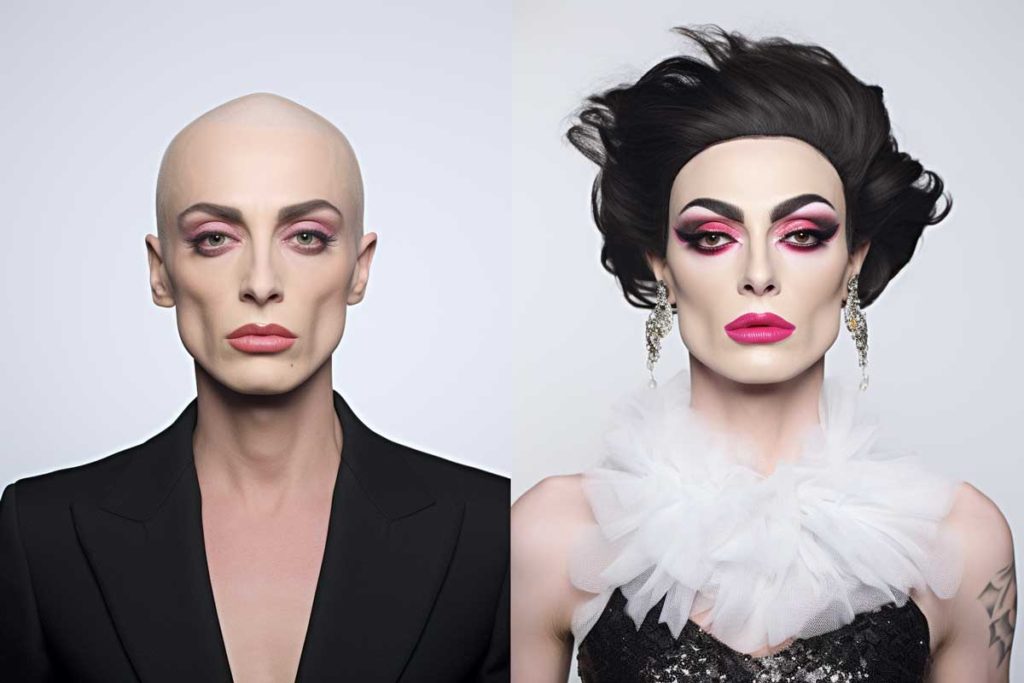
Purpose of This Guide
This guide is a tribute to the lovers of drag culture, drag beginners, drag enthusiasts, and those interested in drag races and drag performances. It’s a step-by-step guide to the basics of drag makeup, focusing on foundation, contouring, and highlighting.
Whether you’re a drag queen just starting out, a lover of drag culture wanting to understand more, or simply someone who appreciates the art of makeup, this guide is for you. We’ll delve into the techniques, the tricks, and the products that will help you create a stunning drag look.
Understanding the Basics of Drag Makeup 101
A Brief History of Drag Makeup
The art of drag makeup has a rich and fascinating history. While the term “drag” itself, used to describe men dressing in women’s clothing, originated in the theater world of the 19th century, the practice dates back much further. From the kabuki theaters of Japan to the opera stages of Europe, men have been using makeup to transform into female characters for centuries.
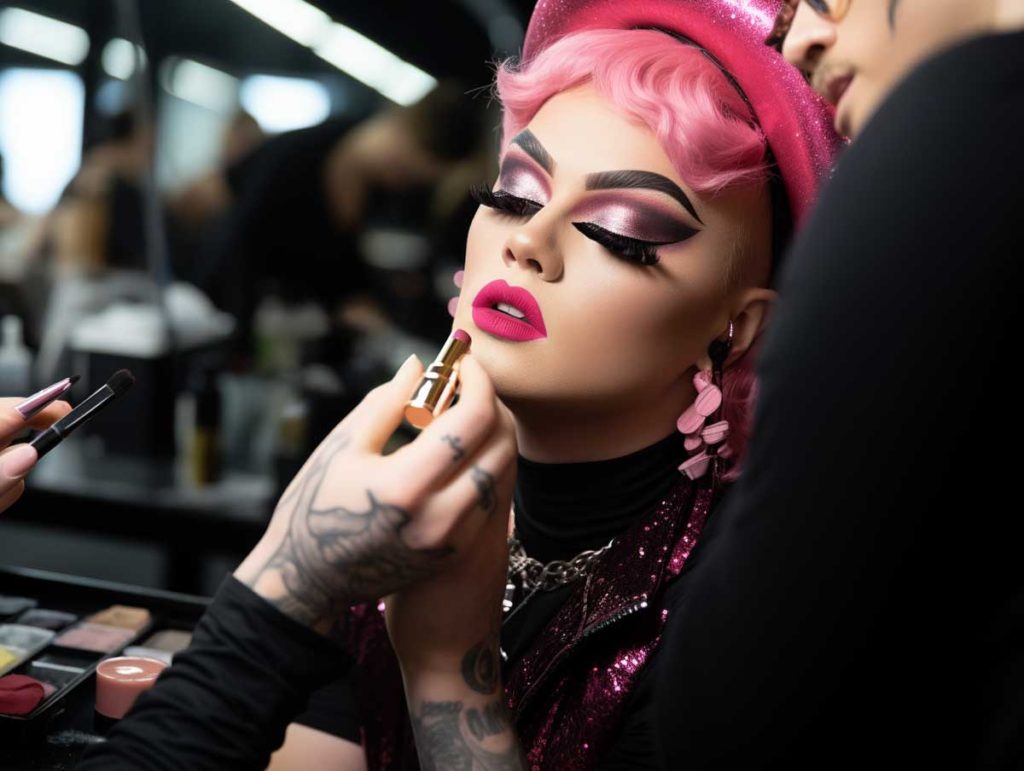
In the 20th century, drag makeup became a cornerstone of the LGBTQ+ community, with drag queens using makeup as a form of self-expression and rebellion. The 1960s and 70s saw the rise of drag balls and pageants, where makeup played a crucial role in the creation of extravagant and glamorous looks.
In recent years, thanks to shows like RuPaul’s Drag Race, drag makeup has entered the mainstream, with drag queens becoming influential figures in the beauty industry. For a more detailed look at the history of drag, check out this article.
The Role of Makeup in Creating a Drag Persona
In the world of drag, makeup is a transformative tool. It’s not just about beauty, but about creating a character, a persona. A drag queen’s makeup can tell a story, convey an emotion, or make a statement. It’s an integral part of the performance, as important as the costume, the wig, or the attitude.
Drag makeup allows queens to exaggerate and accentuate their features, to play with gender norms, and to express their creativity. From dramatic eyes to bold lips, to perfectly contoured cheeks, every element of a drag queen’s makeup contributes to the overall persona.
Key Differences Between Drag Makeup and Everyday Makeup
While everyday makeup is often about enhancing natural features and creating a ‘natural’ look, drag makeup is about transformation and exaggeration. It’s theatrical, bold, and often larger than life.
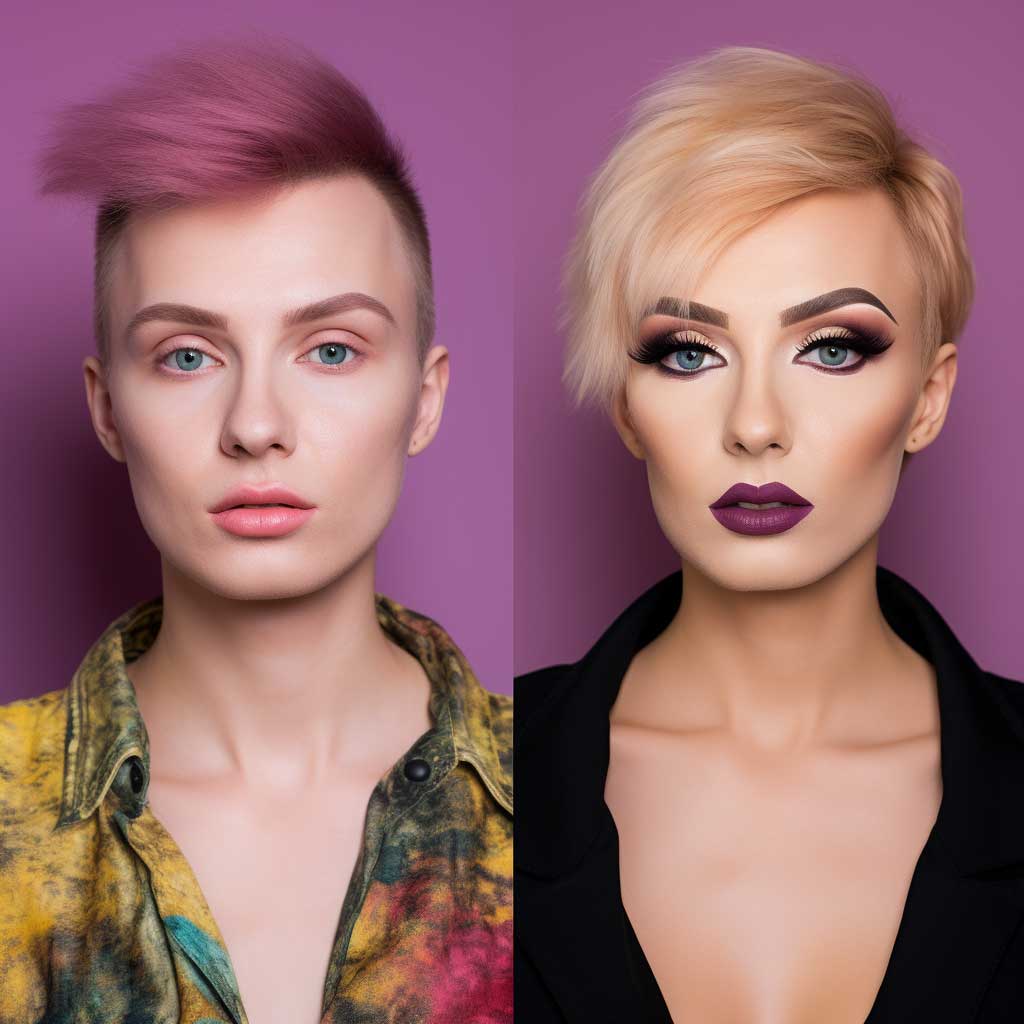
Drag makeup involves techniques like ‘baking’ where powder is left on the face for a period to set the foundation and concealer, and ‘cutting the crease’ to create a sharp contrast between the eyelid and the brow bone. It’s about creating high cheekbones, a smaller nose, fuller lips, and dramatic eyes.
Moreover, drag makeup is often designed to withstand the rigors of a drag performance, including hot stage lights and energetic dance routines. This means it’s typically heavier and more durable than everyday makeup.
Getting Started: What You Need
Before you can start your journey into the world of drag makeup, you’ll need to gather some essential tools and products. The world of drag makeup can be overwhelming, especially for beginners, but don’t worry—we’re here to guide you through it.
Essential Drag Makeup Products
The first step in your drag makeup journey is to assemble your makeup kit. Here are some of the essential products you’ll need:
- Primer: This is the first step in your makeup routine. A good primer will smooth your skin and help your makeup last longer.
- Foundation: Choose a full-coverage foundation that matches your skin tone. This will create a flawless canvas for the rest of your makeup.
- Concealer: You’ll need this to cover any blemishes or dark circles and to highlight certain areas of your face.
- Contouring Products: These can be creams, powders, or sticks. You’ll use these to sculpt and define your face.
- Highlighting Products: These will bring forward certain areas of your face, adding dimension and glow.
- Setting Powder: This will set your makeup and prevent it from smudging or creasing.
- Eyebrow Products: These can be pencils, pomades, or powders. You’ll use these to shape and define your eyebrows.
- Eye Makeup: This includes eyeshadow, eyeliner, and mascara. You can also add false eyelashes for extra drama.
- Lip Products: Choose a lip liner, lipstick, and gloss that complement your look.
- Makeup Brushes and Sponges: These tools are essential for applying and blending your makeup.
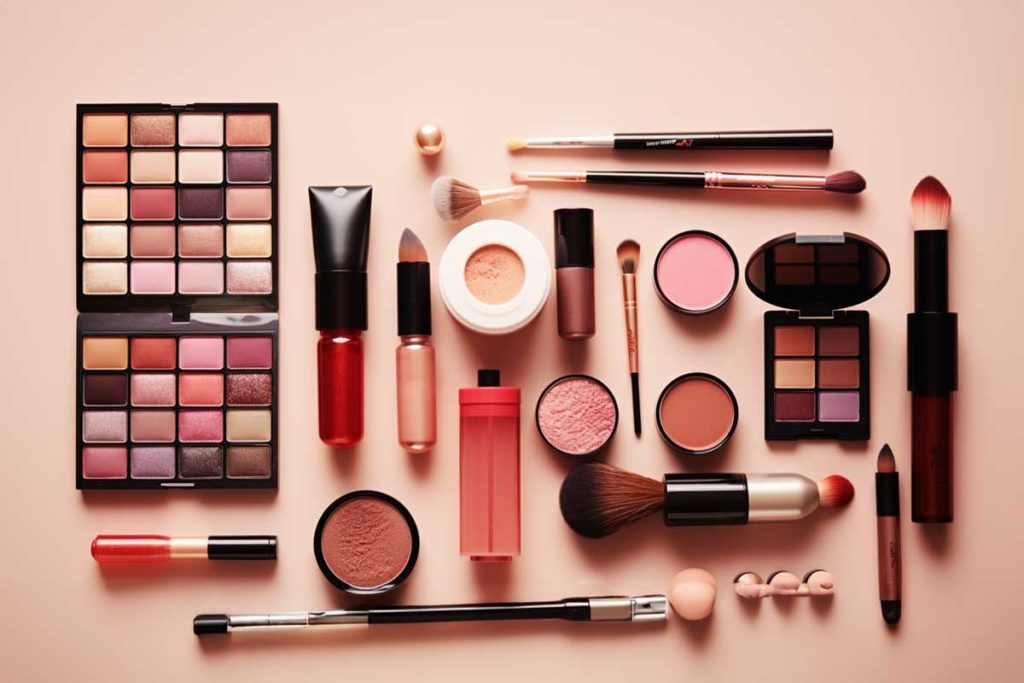
Recommended Brands and Products for Beginners
As a beginner, it can be challenging to know which brands and products to choose. Fortunately, there are many affordable and high-quality products available that are perfect for drag beginners.
For a comprehensive list of recommended products, check out this article on affordable drag makeup kits for beginners. It includes a range of products from trusted brands that are perfect for those just starting their drag makeup journey.
Remember, the most important thing is to experiment and find what works best for you. Makeup is a personal journey, and what works for one person might not work for another. So, don’t be afraid to try different products and techniques until you find your perfect match.
Step-by-Step Guide to Drag Makeup
Now that you have your tools and products ready, it’s time to dive into the exciting world of drag makeup. This step-by-step guide will walk you through the process, from preparation to highlighting.
Preparation
The Importance of Skincare Before Makeup
Before you start applying makeup, it’s crucial to prepare your skin. Good skincare can make a significant difference in how your makeup looks and lasts. Start by cleansing your face to remove any dirt or oil. Next, apply a moisturizer to hydrate your skin. If you have oily skin, opt for a lightweight, oil-free moisturizer. For dry skin, choose a richer, hydrating formula.
Choosing the Right Foundation Shade
Choosing the right foundation shade is crucial for a natural-looking base. The right shade should blend seamlessly into your skin. When testing shades, apply a small amount to your jawline. The right shade will disappear into your skin. Remember, your neck and face’s skin color can be slightly different, so it’s essential to match your foundation to your overall body tone.
Foundation Application
How to Apply Foundation for Drag Makeup
Start by applying a primer to your face. This will smooth out your skin and help your makeup last longer. Next, apply your foundation. Start in the center of your face and blend outwards for the most natural look. Use a makeup sponge or brush to blend the foundation into your skin, making sure there are no visible lines or streaks.
Tips and Tricks for a Flawless Base
For a flawless base, take your time with your foundation. Make sure it’s well-blended and looks natural. If you need more coverage, build up your foundation in thin layers rather than applying a lot all at once. And remember, drag makeup is often heavier than everyday makeup, so don’t be afraid to go a bit heavier with your foundation.
Contouring
Understanding Face Shapes and Contouring
Contouring is a technique used to shape and define your face. By applying a darker shade to certain areas of your face, you can create shadows that enhance your natural face shape. The areas you contour will depend on your face shape. For example, if you have a round face, you might contour your temples and jawline to create a more angular look.
Step-by-Step Guide to Contouring
Start by identifying the areas of your face you want to contour (usually the sides of your nose, the hollows of your cheeks, your temples, and your jawline). Apply a contouring product to these areas and blend well. The key to successful contouring is blending—the goal is to create natural-looking shadows, not harsh lines.
Highlighting
The Role of Highlighting in Drag Makeup
Highlighting is used to bring forward certain areas of your face, creating a contrast with the areas you’ve contoured. This adds dimension to your face and makes your makeup look more dynamic.
How to Highlight Effectively
To highlight, apply a lighter product (like a concealer or highlighter) to the areas of your face you want to bring forward. This usually includes the center of your forehead, the bridge of your nose, the tops of your cheekbones, and your chin. Blend well to create a seamless transition between your highlight and contour.
Remember, practice makes perfect. Don’t be discouraged if your first few attempts don’t turn out as you’d like. With time and practice, you’ll be able to create a stunning drag makeup look. For more detailed instructions and tips, check out this first-time drag transformation guide
Common Mistakes and How to Avoid Them
Even the most seasoned drag queens can make mistakes when it comes to makeup. But don’t worry, we’re here to help you avoid some of the most common pitfalls.
Common Drag Makeup Mistakes
- Not Preparing the Skin: Makeup sits better on a clean, moisturized face. Skipping skincare can lead to a less-than-perfect makeup application.
- Choosing the Wrong Foundation Shade: Using a foundation that’s too light or too dark can disrupt the overall look. It’s crucial to find a shade that matches your skin tone.
- Overdoing Contouring: While contouring is essential in drag makeup, going overboard can make your makeup look harsh and unnatural.
- Ignoring the Neck: Your face and neck should be the same color. Ignoring the neck can lead to a mismatched look.
- Forgetting to Set Makeup: Drag performances often involve a lot of movement and hot lights, which can cause makeup to smudge or fade. Setting your makeup can help it last longer.
Tips on How to Avoid These Mistakes
- Always Start with Skincare: Cleanse and moisturize your face before applying makeup. This will create a smooth canvas for your makeup.
- Test Foundation Shades: Test a few different shades on your jawline to find your perfect match. Remember, your foundation should blend seamlessly into your skin.
- Blend, Blend, Blend: When it comes to contouring, blending is key. You want to create shadows, not stripes.
- Don’t Forget the Neck: When applying foundation and contouring, extend the product down to your neck to ensure everything matches.
- Set Your Makeup: Use a setting powder or setting spray to lock your makeup in place. This will help it withstand the rigors of a drag performance.
Remember, practice makes perfect. The more you practice, the better you’ll get at avoiding these common mistakes. For more tips and tricks, check out these drag queen makeup tips.
Inspiration from Famous Drag Queens
One of the best ways to learn and get inspired is by looking at those who have mastered the art of drag makeup. Let’s take a look at a few famous drag queens known for their exceptional makeup skills.
RuPaul
No list of drag queens would be complete without mentioning RuPaul, arguably the most famous drag queen in the world. RuPaul’s makeup is always flawless, with a focus on a smooth, full-coverage base, dramatic eyes, and bold lips. RuPaul’s makeup emphasizes the importance of a flawless foundation and the power of a bold lip.
Trixie Mattel
Trixie Mattel, known for her time on RuPaul’s Drag Race, has a very distinctive makeup style. Her exaggerated eye makeup, overdrawn lips, and dramatic contouring are her trademarks. Trixie’s makeup style shows us that there are no rules when it comes to drag makeup—it’s all about self-expression.
Jeff Roose
Jeff Roose, a renowned drag queen makeup artist based in Dallas, is known for his transformative makeup skills. His ability to turn anyone into a stunning drag queen is truly impressive. Roose’s work emphasizes the transformative power of makeup and the importance of mastering the basics. You can learn more about his techniques and get inspired by his work here.
Bianca Del Rio
Bianca Del Rio, another RuPaul’s Drag Race alum, is known for her sharp wit and her equally sharp contouring. Her makeup style is theatrical and exaggerated, with a focus on dramatic eyes and high, defined cheekbones. Bianca’s makeup shows us the power of contouring and the impact of a dramatic eye.
These drag queens, with their unique styles and techniques, show us the endless possibilities of drag makeup. They remind us that makeup is a form of self-expression and that there are no limits to what you can create. So, as you embark on your drag makeup journey, remember to be bold, be creative, and most importantly, be you.
Key Points
- Drag makeup is a transformative medium, integral to the creation of a drag persona.
- The guide is designed for drag beginners, lovers of drag culture, and those interested in drag races and performances.
- Drag makeup has a rich history, with its roots in theater and its modern form heavily influenced by the LGBTQ+ community.
- The art of drag makeup involves techniques like ‘baking’ and ‘cutting the crease’ to create a dramatic, larger-than-life look.
- Essential drag makeup products include primer, foundation, concealer, contouring and highlighting products, setting powder, eyebrow products, eye makeup, lip products, and makeup brushes and sponges.
- Common drag makeup mistakes include not preparing the skin, choosing the wrong foundation shade, overdoing contouring, ignoring the neck, and forgetting to set makeup.
- Famous drag queens like RuPaul, Trixie Mattel, Jeff Roose, and Bianca Del Rio can provide inspiration for beginners.
- Beginners are encouraged to experiment, practice, and find their unique style in drag makeup.
- There are many resources available for those looking to improve their skills and deepen their understanding of drag culture.
Conclusion
As we wrap up this beginner’s guide to drag makeup, it’s important to remember that the journey is just as important as the destination. Drag makeup is an art form, a means of self-expression, and a way to create a character that tells a story. It’s about more than just looking fabulous—it’s about finding your unique style and having the courage to share it with the world.
Don’t be discouraged if your first few attempts don’t turn out as you’d like. Every drag queen, even the most famous ones, started where you are now. With practice, patience, and a lot of creativity, you’ll be able to master the art of drag makeup.
Remember, the world of drag is all about breaking rules and pushing boundaries. So don’t be afraid to experiment, to try new things, and to make mistakes. That’s how you learn and grow.
Resources
As you continue your drag makeup journey, it’s important to keep learning and exploring. There are many resources available that can help you improve your skills and deepen your understanding of drag culture.
For example, this article discusses the importance of research in drag queen performances. It’s a great resource for those looking to delve deeper into the world of drag.
Remember, the key to mastering drag makeup is practice, so keep experimenting, keep learning, and most importantly, have fun. The world of drag is waiting for you.
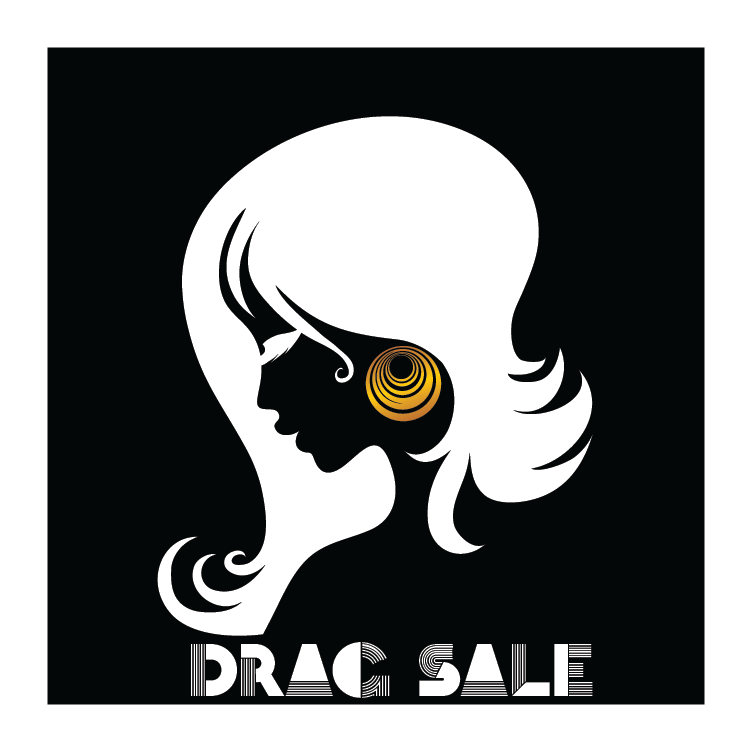
Leave a Reply